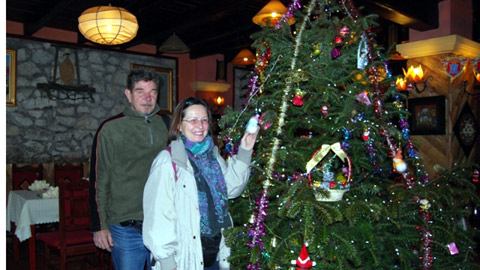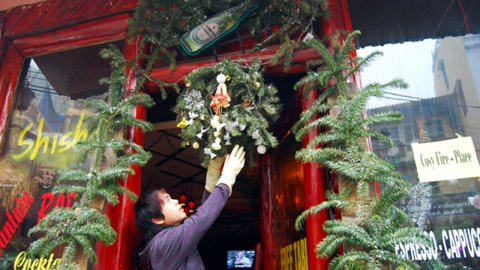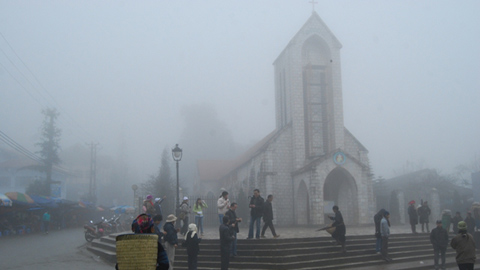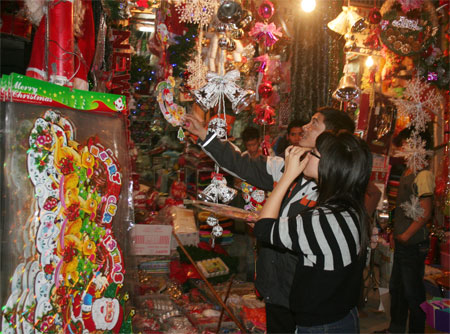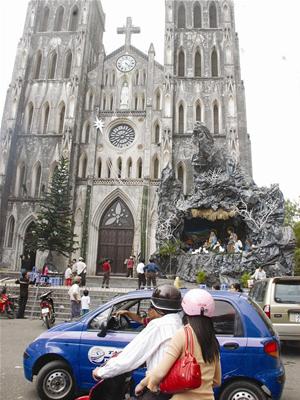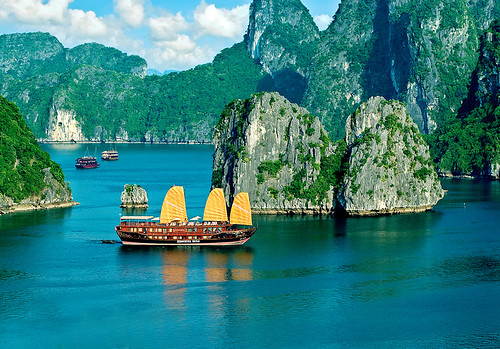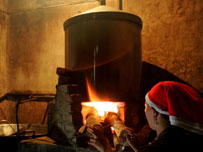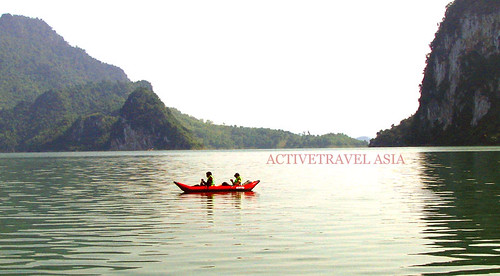After cycling, sweating, and occasionally slogging through over 1,600km of SE Asian roads, we’ve experienced more than a few epic rides. While consistently beautiful beaches, the stunning temples at Angkor, and a myriad of rural towns that we’ve cycled through were all certainly impressive and scenic, it’s the challenging hill-climbs that remain the most memorable.Maybe it’s the combination of cool temperatures and great vista views, though perhaps some sort of subtle self-indulgent pseudo-masochism might be closer to the truth. Whichever, one day’s ride has set our cycling benchmark so ridiculously high that we were literally in the clouds: the 140km journey from Da Lat to Nha Trang, Vietnam.
Da Lat is a famed former French hill-station, now a prime honey-moon spot for the Vietnamese, with the prerequisite cable car, flower garden, and kitsch that such a place seems to require. There’s even a hotel-cum-crazy-house, a former imperial mansion in which tourists can play dress-up, and plenty of coffee-shops to while away an entire lifetime. After three days of relaxation and rain-delayed plans, we were certainly ready for what we got: a real cycling adventure.

Great view & Distant waterfall - Bike Dalat The day started typically enough, as our hazy directions to the “new road” — which would save us about 100km — involved going past a train station that we never saw. However, all the people along the way kept pointing straight ahead, so without any current maps or any real certainty we proceeded up into the hills. We’d been told that this was not the primary bus route, so we took the lack of traffic to be a comforting fact, and the enthusiastic waves from passing motorists were encouraging. Plus the road actually was new, which made the terrain much more manageable, reassuring us that while we might be cycling into the unknown, it was at least the correct unknown.
Subtle hills soon gave way to monstrosities, and though there was the occasional downhill to rest our legs, the reality was the road just kept going up.
There was some construction early on, but in general the clean black pavement just kept winding skywards, and the layers of hills in front of us gave no indicators of how long we’d have to pedal. Three hours in, with just over 40km cycled, we pulled over, exhausted, to refuel our starving bodies with some of our few remaining Lara Bars and to assess the situation.
It seemed that we were near the top, though the brief flat stretch we’d paused on sat just before a massive curve, with the path ahead obscured by yet another hill filled with trees and stones. Our water supply was starting to become a concern, though we’d each brought about 2 litres, more than we usually carry, our constant gulping had left us with little more to drink. Laying down and pathetically doing a few stretches, or even smiling at the infrequent honking trucks, proved a challenge. But with time and weather as equal enemies as exhaustion and thirst, we knew every minute we lingered was a minute we might spend drenched, or in the dark, later in the day.
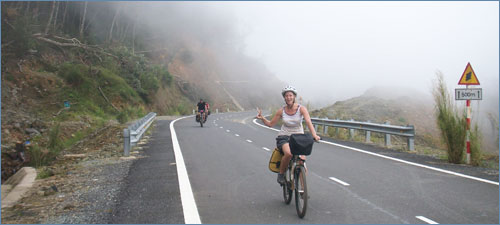
Down hill is more like this - Bike Dalat
Slowly riding onwards then, and ascending yet another hill, we could tell that we were closing in on the clouds. The road wriggled like a worm, clearly a feat of engineering at such a height (2,000 metres perhaps) and in such thick hills, but it turned out we had plenty more to ascend as each hill we climbed merely gave way to another still higher beyond it. As 40km turned to 60km, respite finally arrived as we entered the clouds themselves. The air was cool and the wind strong, forcing us to dig deep within our depleted reserve of stamina in order to pedal up one final hill.
Beyond it we could see only clouds, which by now was the most comforting feeling in hours. Coming around a tight corner, on the edge of both precipice and delirium, a most joyful thing occurred: the road headed downhill. Disbelief quickly turned to elation, our legs eager to catch a break from the relentless pedaling. Then one miracle led to another, as high up in the hills, we ran into a Vietnamese tour group that had stopped for photos of the cumulus variety. Their English-speaking guide assured us that it was all downhill from here, for at least an hour.
Energised, we headed downwards at a breakneck pace, pulled by gravitational forces to speeds we can usually only dream of. After briefly stopping to buy water from a grumpy grandmother at a small shack, for the next 45 minutes we hurtled down the mountain-side, frequently pausing for photos. All around us there were waterfalls, some massive and others just cracks oozing water. Trees had fallen onto the road in some places, their roots no longer able to support the weight, and the numerous signs warning of falling rocks were not exaggerating. Coming down the mountain we passed few vehicles, mostly just brave moto drivers forcing their cycles ever upwards, and impressively parts of the pass were under heavy construction.
Covering 30km in three-quarters of an hour was exhilarating, though keeping a proper speed in the hairpin turns was challenging and at times a little frightening: this is a place where accidents can easily mean death. Since this isn’t being written post-mortem, nor is it dedicated to a fallen comrade, we obviously survived intact, although our general lack of food meant starvation was beginning to appear in our thoughts as we made the descent. Finally, as the cool mountain air slowly departed, warmed by the incoming sea breeze, we came to a small village with a couple of restaurants. Our meal had more nutritional value than anything else, but we didn’t need a culinary masterpiece, just calories.
Refueled, but still weary, we knew we had to keep moving since another 50km remained, and at 3pm darkness was already close on the horizon. This third leg of our journey proved the most taxing, since while the small hills were nothing like what we’d done earlier, our bodies lacked the stamina to easily climb them. The road was also in abysmal condition, at times merely a rough dirt track, almost always bumpy, and occasionally still being built. At least the route was open, but apparently it’s far from completion, and while it did sprinkle a few times we were gratefully spared any sort of typical monsoon downpour.
After about ninety minutes of ups-and-downs we finally returned to a smooth, paved road, and for the first time all day it was even flat. As day turned to night, we feverishly pedaled onwards, the street lights of greater Nha Trang a most welcoming sight. Eleven hours in, almost twice our previous longest day, we entered the city itself and eventually arrived at the ocean. Quickly getting our bearings, we headed towards the welcoming tourist ghetto, found another of Vietnam’s well-equipped cheap hotels, and began undoing the damages of the day.
As the rain pounded down in torrents on the roof above, we scrubbed mud and blood off under a stream of hot water and then fell into the comforting embrace of our beds. We did manage to get to dinner, hobbling pathetically through the streets in a daze, and for once we were far from concerned about eating in an otherwise empty restaurant. As we sat and ate, chewing and reflecting simultaneously, we couldn’t help but bask in our own glory a bit, yet we know that the Vietnamese hills were just a taste of what awaits us in Laos!
Source: Travelfish.org
Related sites:
- Dalat Travel Guide
- Biking tours in Dalat, Vietnam
- Short excursions in Dalat, Vietnam

